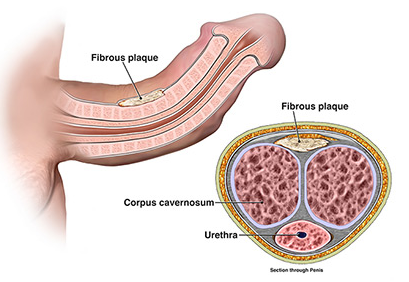Peyronie’s disease is when a male’s penis has an abnormal curvature during erection. Up to 7 percent of males experience Peyronie’s disease, and it is typically caused by penile trauma during sexual intercourse.
Any injury to the tunica albuginea may result in scar tissue forming in the cells, which forms the plaque of Peyronie's Disease.
Symptoms of Peyronie's Disease are
- Bent / curved penis
- Lumps on the penis
- Painful erections
- Soft erections
Peyronie's Disease is usually split into the acute and chronic phases. The acute phase is the first 6 to 18 months. During this time the plaque forms in the penis, and the curving of the penis continues to get worse. The chronic phase is when the plaque stops growing and then penis does not continue to curve.
Treatments for Peyronie's Disease
The goal of treatment is to reduce pain and keep you sexually active. There is no cure. Education about the disease and its usual course is often included in the treatment plan. In some cases, treatment is not needed. Peyronie's disease often happens in a mild form that heals on its own in 6 to 15 months. Treatment may include:
- Vitamin E: Small studies have reported improvements with oral vitamin E, but larger studies have not been done to prove that this treatment works. Still, this is an easy, low-cost treatment choice.
- Various medicines: Medications taken by mouth may help reduce inflammation and improve blood flow
- Xiaflex®. is a prescription medicine that is injected into the scar tissue to weaken and break down the plaque
- Surgery: May be used to correct the plaque in severe cases, such as when the man has pain during an erection or can’t keep an erection long enough to have sex.

